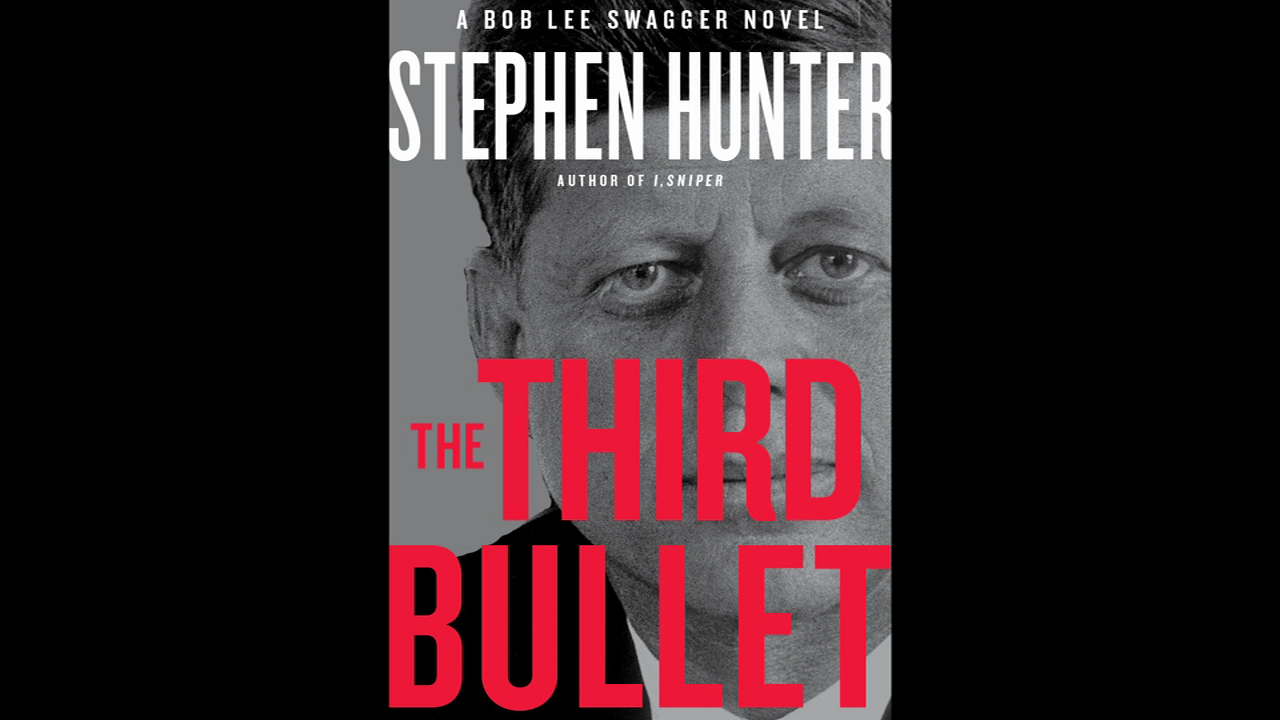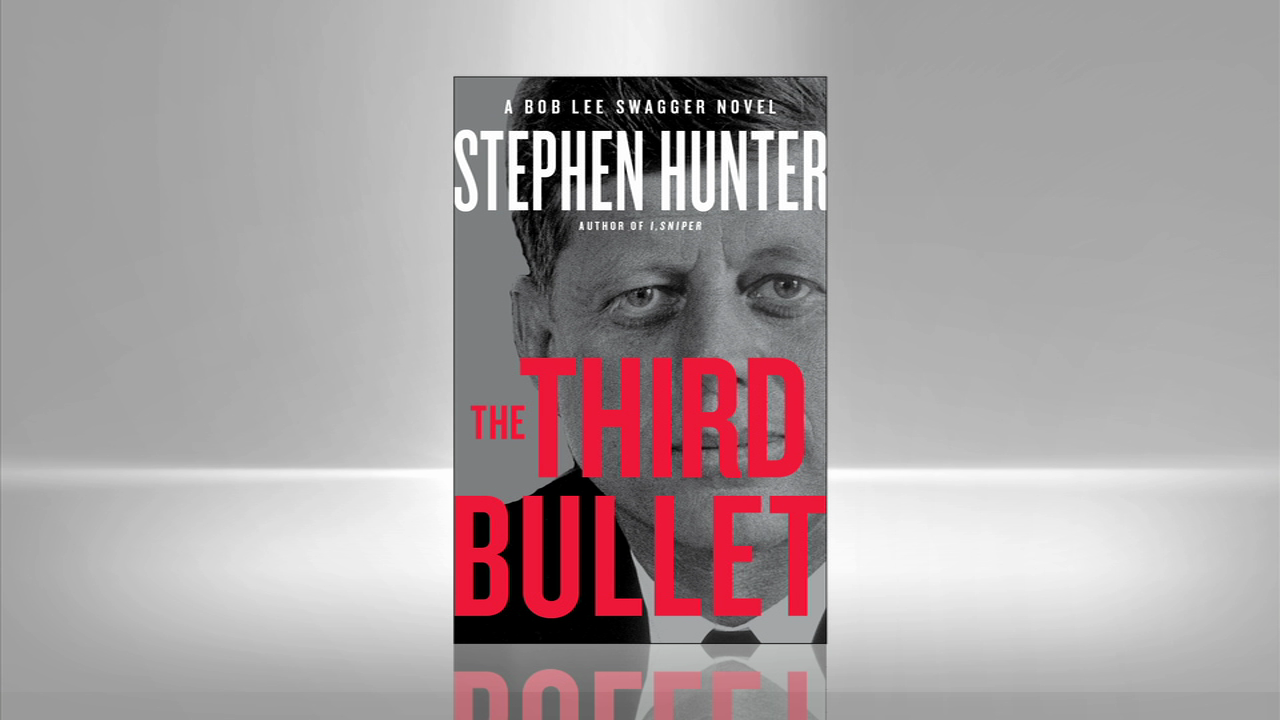Get our latest book recommendations, author news, and competitions right to your inbox.
Table of Contents
About The Book
Former marine sniper Bob Lee Swagger investigates one of the most enduring controversies of our time—the JFK assassination—in this New York Times bestselling “terrific thriller” (Booklist, starred review).
Bestselling author Stephen Hunter takes on one of the most shocking crimes in American history when his celebrated hero ex-Marine sniper Bob Lee Swagger follows the smallest hint of a lead to its staggering conclusion—about the fateful third bullet that ended the life of President John F. Kennedy.
Bestselling author Stephen Hunter takes on one of the most shocking crimes in American history when his celebrated hero ex-Marine sniper Bob Lee Swagger follows the smallest hint of a lead to its staggering conclusion—about the fateful third bullet that ended the life of President John F. Kennedy.
Reading Group Guide
Join our mailing list! Get our latest book recommendations, author news, and competitions right to your inbox.
By clicking 'Sign me up' I acknowledge that I have read and agree to the privacy policy and terms of use, and the transfer of my personal data to the United States, where the privacy laws may be different than those in my country of residence.
A Conversation with Stephen Hunter
Q: The Third Bullet has some roots in the very first Bob Lee Swagger novel you wrote twenty years ago called Point of Impact. Tell us a little about the relationship between the two books.
A: Point of Impact was a very tough book to write—one problem was that it was inspired by and set to be about the JFK assassination. When I started it everyone believed in conspiracy. Halfway through I read Case Closed by Gerald Posner and I immediately ceased believing in conspiracy. Thus I was halfway through a novel whose whole intellectual premise had just been destroyed. So I patched and changed, and abridged and diddled, and in the end separated Point of Impact from the JFK assassination. But I am sloppy and I missed stuff, lots of stuff. Twenty years passed, new ideas came to me about this and that, and suddenly I saw an opportunity to do the JFK book of my dreams. I had a researcher go back and document all the connections to JFK that remained in Point of Impact, and I used those as a foundation for The Third Bullet.
Q: How did you connect the two plots?
A: The main problem I had with Point of Impact was the villain; he was too broad, encompassing both Special Forces experience and Washington intelligence culture smarts. I couldn't get it to work. (I had obviously never heard of Richard Armitage!) Late in the process, I broke that character into two: Col. Raymond Shreck, a court-martialed Green Beret who’d become a freelance mayhem expert, and Hugh Meachum, an elderly (to me; I was in my 40s at the time) Ivy League old boy and Intelligence sprite of mysterious connections. It saved the book and it made The Third Bullet possible, because I was able to resurrect Hugh Meachum for a large role. I had great fun with Hugh and believe me, there'd be no book at all without Hugh’s voice and my wife Jean’s coffee.
Q: Point of Impact was made into the movie Shooter, starring Mark Wahlberg as a young Bob Lee Swagger. Speaking as a Pulitzer Prize-winning film critic, who would you cast to play Swagger now, in The Third Bullet?
A: Mark was wonderful and delivered a superb performance—there was no movie without Mark. But for this book, we need someone older and wiser. I’d ideally cast Tommy Lee Jones whose face has collapsed into an Egyptian cataract of woe and melancholy. He’s the right age and in my humble opinion still vital and virile (he happens to be my age!)
Q: This seems like the perfect intersection of subject, author, and character. How did you get the idea to put Bob Lee Swagger at the center of the JFK assassination? And how did you find a new way into the story fifty years later?
A: The whiskey made me do it! Actually I think it was wine of some superior vintage contributed by great buddy and major domo of the empire, Gary Goldberg. I’d had theories and thoughts and policies on the JFK event for years and at one point had toyed with an idea of doing a book entitled “Seven theories of JFK,” in which I showed off by conjuring seven possible conspiracies. I had also wanted to write a piece on the ballistics of the JFK event for the Washington Post’s Sunday opinion section, but couldn't sell it to the editor. So my mind was full of all sorts of JFK stuff; enter stage right, Gary’s Papillion de Neuf Chartres 1997, or whatever it was, and I suddenly (very suddenly) stumbled on the right combination to spring the lock and the next second, with enormous excitement, I knew I had a book. Thank God Gary has refined taste in wine; without the Neuf Chartres '97, I'd be working on Vampire Sniper in Teenage Zombieland>.
As for the new way in, I’d written a nonfiction book called American Gunfight about the assassination attempt on Harry Truman in 1950. During that time, I’d gotten to know the late Floyd Boring, the Secret Service agent who was head of the Blair House detail that day in November (another day in November!) It turned out that thirteen Novembers later, Floyd had been in Dallas as head of the SS advance party on the scout for the Kennedy trip. That link interested me, though Floyd being touchy about November 22, 1963, my co-writer John Bainbridge and I never asked him about it. But it lingered and it seemed to me to set up a plausible mechanism by which, through the vessel of my own doppelganger and his unfortunate death, I could get Bob on the JFK trail. A lot of this business is about setting up “plausible mechanisms.”
Q: You traveled to Dallas to research this book. What was it like to survey the scene through the eyes of Oswald and ex-marine sniper Bob Lee Swagger?
A: Spooky. I’d been before; part of my research for the early version of Point of Impact involved a Dallas trip, but Dallas always surprises in the smallness of the location. Dealey Plaza is SMALL; the distances are SHORT; it's so familiar that everything seems BIG; you sort of feel you’re in a Nov. 22, 1963 theme park, courtesy of Disney or Six Flags. And it has such a buzz of tragedy and mystery despite its utter banality (without the assassination, I’m sure it would have been razed and turned into some kind of night life zone by now). But armed with a batch of new insights and an insatiable curiosity, I was able to cut through the buzz and get down to work. Put my brain into eighth and it seemed to come up with some new ideas.
Q: Some pivotal scenes take place inside the infamous Moscow prison, Lubyanka. Did you actually get inside?
A: Scary building. Unlike Dealey, it lives up to its reputation. No, never got inside as the new rulers have closed of access that they granted after The Fall; but I prowled around its outskirts, let my imagination off the leash and tried to absorb its meanings. Very provocative couple of days. All the woe those old stones have seen!
Q: Your theory about “the third bullet” is explained in detail in the novel. Briefly, the question for Bob Lee Swagger is, why did the third bullet fired at JFK explode, and what does that mean in the context of the shooting? On a scale of 1 to 10, how accurate are the ballistics you describe?
A: Everything I describe is not only possible—I’ve done it. I’ll spare the details, but basically it involves removing a 6.5 mm Carcano bullet (I mean bullet, not cartridge or shell) from its casing and, with minor modifications easily mastered by any advanced hobby shooter in US now or then, reloading it into the primed, loaded shell of a much more powerful Winchester .264 magnum. It works because the 6.5 mm is .267 in bore diameter and the .264 is .264 in bore diameter. The .003 difference doesn’t matter at the speed the bullet leaves the barrel. With a certain load, I’ve gotten 100-yard accuracy under an inch, that is, three shots in three-quarters of an inch, what shooters call “minute of angle” accuracy. Thus the 6.5 bullet can be fired at roughly 50 percent more velocity in a .264 Magnum rifle with superior handling characteristics, optical system and intrinsic accuracy; it could have easily made that third shot from a position very close to Oswald’s in the Texas book depository, and striking at the much higher speed, it could be counted on to disintegrate, as it did.
Q: In the opening chapter, a thriller writer gets offed by a bad guy in a manner similar to one of his own novels, and that starts the writer’s widow on a course to contacting Bob Lee Swagger to investigate. How does your wife feel about this setup?
A: She loved reading about my death! And, as anybody who knows us can testify, who can blame her?
Product Details
- Publisher: Simon & Schuster (January 15, 2013)
- Length: 496 pages
- ISBN13: 9781451640250
Resources and Downloads
High Resolution Images
- Book Cover Image (jpg): The Third Bullet eBook 9781451640250
- Author Photo (jpg): Stephen Hunter Photograph by Jud Kirschbaum(0.1 MB)
Any use of an author photo must include its respective photo credit
















